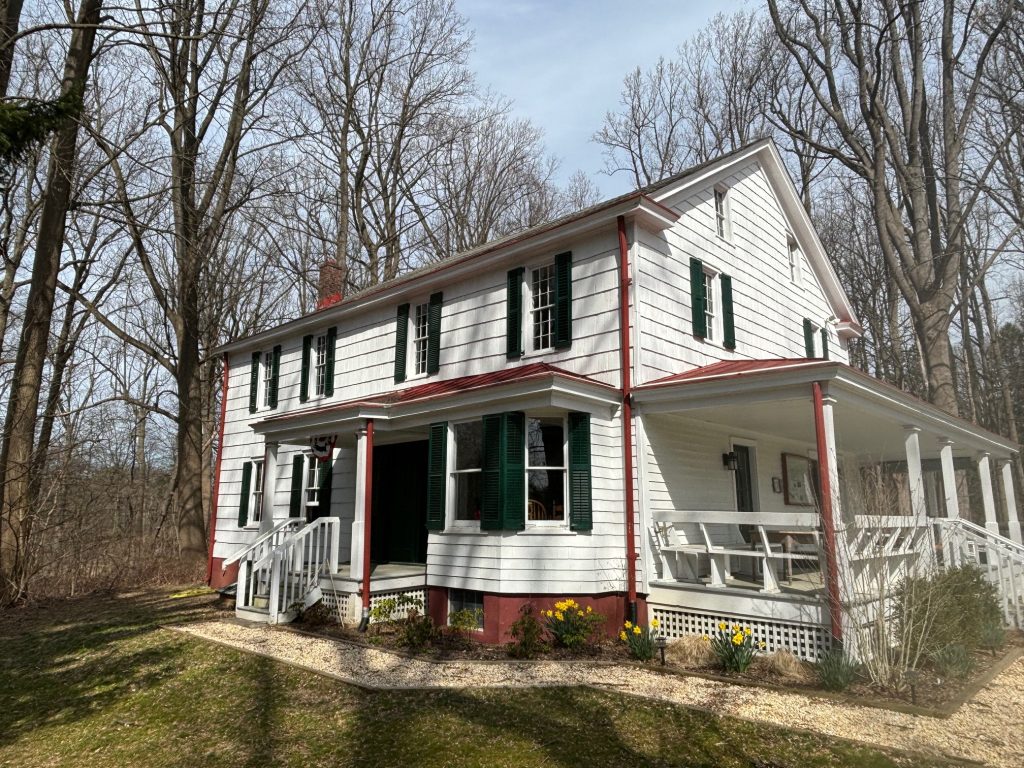
By Stephen Appezzato
MIDDLETOWN – The centuries-old Grover House will undergo a key renovation to preserve a little bit of Monmouth County’s rich history.
This month, the Monmouth County Historical Commission presented another round of preservation grants to help local groups keep the area’s history alive. For 2024, nine projects will receive funding totaling $66,155 for preserving, restoring, and rehabilitating historic structures.
The Grover House, a 1730s farmhouse currently located off West Front Street abutting Stevenson Park, will receive $5,449 to install era-appropriate flooring.
The house was originally built by James Grover, the great-grandson of James Grover who arrived in the American Colony in the 1640s and received land from the governor of New Jersey through the Monmouth Patent. Grover originally built his farmhouse near the modern-day Garden State Parkway Exit 109. As the exit was being constructed, the township had to relocate the house.
“When this was built, the wood (used to build the house) was old-growth wood, so the rings are very tight,” said Navesink Maritime Heritage Association (NMHA) trustee Lynn Fylak. This sturdy old-growth material has helped the farmhouse endure over the centuries. But Fylak explained that these old-growth building materials – which are often more resilient – are difficult to come by today, which preservationists must consider.
The NMHA is a local nonprofit that also stewards the Grover House. Since the 1990s, the organization has leased the property from the township.
Originally, the Grover House had only two first-floor rooms; it was enlarged in the early 1800s. According to NMHA trustee Chuck Abel, who leads the house’s stewardship activities, during the relocation of the structure, much of the early flooring was removed for transport.
“You can’t move a structure without stuff falling apart,” Fylak said.
“They did set aside what they could,” Abel said, “but none of it is enough to do any one room.” Once the house was resettled, modern plywood subfloors were installed for structural integrity.
The county’s grant money will offset the cost of period-correct flooring to complement the house’s original rooms.
The Grover House is a living, breathing example of local history. A look inside reveals spots of exposed walling, which depict developments in construction techniques over the years, including the use of wood beams, brick, clay and plaster mixed with straw and horse hair. Members of NMHA hope to preserve Monmouth County’s rich history through their continued stewardship of the Grover House.
“New Jersey was instrumental in the pre-contact history of the United States,” Fylak said, describing the Garden State as a “headquarters” located between Philadelphia and New York that contains historic remnants from both Loyalists and Patriots.
“A lot of our farmland that existed here has been turned into developments and housing and such,” Fylak said. With help from the county and other nonprofits, “that’s really the only way to save any structures that exist because not too many people are going to donate their old family land for preservation,” she said.
Of the nine preservation grants awarded by the county this year, the Atlantic Highlands Historical Society is the only other Two River area organization to receive funds. The historical society will use its award to fund repairs to the Strauss Mansion – an 1893 summer cottage overlooking Sandy Hook Bay. The rest of the grants announced will benefit preservation missions in Asbury Park, Freehold, Ocean Grove, Manasquan and Millstone.
In a release, county commissioner Erik Anderson said it was important to recognize these individuals and organizations “that work so diligently to preserve and conserve that history.”
“We thank them for all of their efforts,” added Anderson.
After the Grover House’s flooring project is complete, Fylak said the NMHA has its sights set on installing electricity in the two original rooms to make them usable and constructing a period-correct barn – similar to the original that existed on the Grovers’ farm – to host educational programming.
“Without preservation, there would be no glimpse of that essential part of our existence,” Fylak said.
The article originally appeared in the March 21 –March 27, 2024 print edition of The Two River Times.














